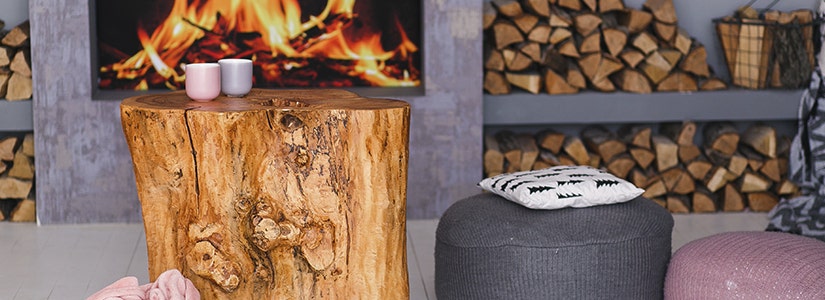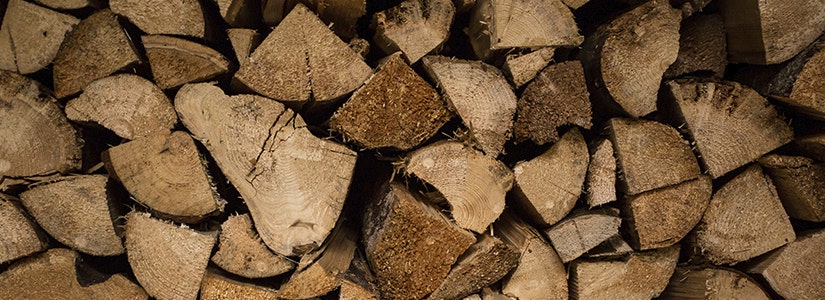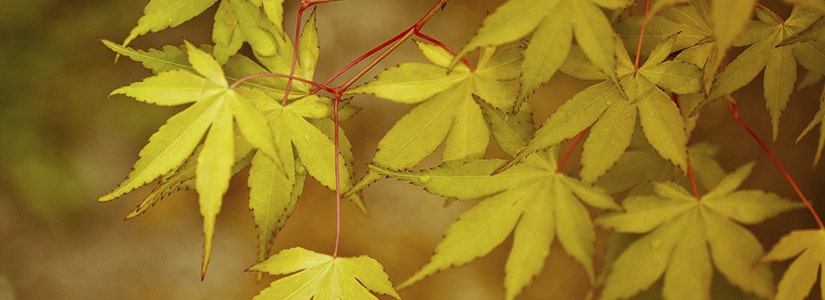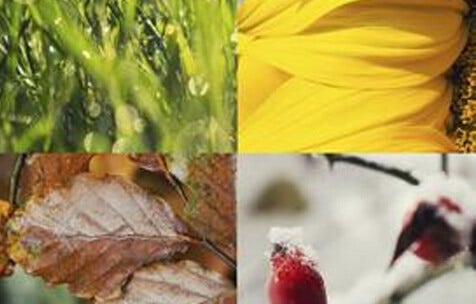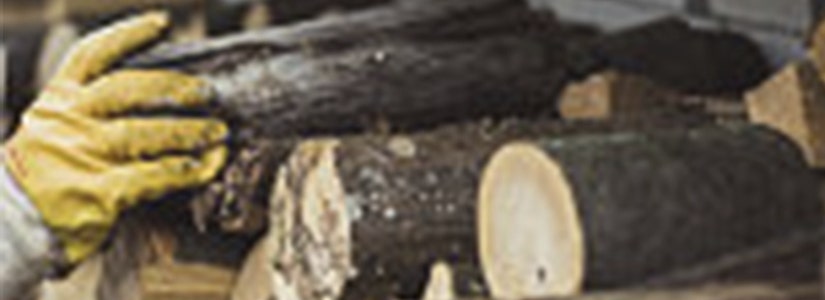

- Home
- Solution Center
- Learn
- Seasonal
- Firewood Safety Tips
Firewood Safety Tips
Nothing warms like a roaring fire. Built in an open hearth, campfire or heat-radiating stove, a wood-fueled fire stirs and creates cozy memories. But before you light the first log this wood-burning season, take the time to review firewood safety tips
Firewood Pest Problems
Even though insects may nestle into firewood for a long winter's nap, never apply pesticides to cut wood. Most often pesticide products only cause insects to burrow more deeply into wood. Additionally, if you burn wood treated with pesticides, you risk releasing those chemicals into your home. For more information on handling firewood, read about the storing and aging process.
Avoid the Hairy Rope
Poison Ivy vines, which often wrap around trees, can have a woody consistency that looks ideal for burning. If you spot a hairy, woody vine on wood you've purchased or cut, cull the affected log from the burn pile. Don't try to remove the vine and burn the log, sans vine. If you miss any woody roots containing poison oil, you risk developing the rash –including in your lungs if you breathe the smoke.
Store It Right
If you plan to store seasoned wood in your garage or outdoor workshop, make sure no open ignition sources are nearby. This includes tools such as grinders, torches or welders. Learn more tips for storing and seasoning firewood.
Only Buy Local Firewood
Many invasive pests or diseases that attack trees travel in firewood, including Emerald Ash Borer, Asian Longhorned Beetle, and Thousand Cankers Disease. Always obtain wood locally to avoid importing a new pest into your area. Most experts suggest not moving firewood more than 50 miles.
Firewood From Storm Damage and Wood Windfalls
It's okay to season and burn wood obtained through storm damage as long as it isn't rotten, diseased or treated with pesticides.
Hardwood vs. Softwood
Wood falls into two categories: softwood (conifers) and hardwood (deciduous trees). Typically hardwood is denser and harder than softwood, but not in every case. Hardwoods and softwoods burn in different ways.
Different hardwoods also have different heat outputs, which is measured in British thermal units. A higher BTU means you'll get more heat per wood volume.
Hardwood
- Burns longer with a low, consistent flame
- Produces more glowing coals that release radiant heat over a long period of time
- Is more difficult to ignite
- good for wood burning stoves
Softwood
- Burns very hot and very quickly with a high flame
- Fast burn means fire must be tended more frequently; coals extinguish quickly
- Ignites easily, good for kindling
- Great for campfires or open fireplaces
Seasoned Wood
For best burning, wood moisture content should be near 20%. Properly seasoned firewood burns more safely and efficiently than green wood. Consider seeking out the following types of wood, that, when properly seasoned, typically make the best fires.
Hardwood
- Eucalyptus
- Fruitwood
- Hickory
- Locust
- Madrone
- Oak (all types)
- Walnut
Softwood
- Cedar
- Fir
- Hemlock
- Pine
- Redwood
Some softwoods, such as Red Cedars and some pines, contain moisture pockets filled with contained gas that explodes when heated. The explosions (pops) throw sparks, which are dangerous in open fireplaces lacking proper screens.
When properly seasoned, the following make great firewood options, but they do have some issues to take into consideration:
Beech: burns very hot and produces a long-lasting coal, but may melt metal on fire pits
Black Locust: burns a long time and produces immense heat with a midsize flame, but has thorns; use care when handling
Elm: some say its smoke stinks, hard to split, creates a fire that requires constant attention
Mulberry: difficult to ignite and full of sparks, but energy-rich like oak
Trees To Avoid for Firewood
Also worth noting are the following woods that tend to be tough to split, even with a hydraulic splitter: American Elm, Sycamore, Sweet Gum, Pecan, Pistachio, Almond, Grape and Red Gum. Hickory, some Oaks, and Olive may be easier to split with mechanical help, but they'll be tough to split by hand.

